As the cheese board arrives, what are you reaching for first? The velvety soft cheeses, the tangy hard varieties, or the bold, eye-watering blues?
Europe offers something for lovers of cheese in all its delicious forms, from the creamy Wensleydales of northern England to the buttery Burratas of southern Italy.
So, grab your favourite cheese knife and dive into our cheese guide, where we explore 15 of the finest cheeses in Europe.
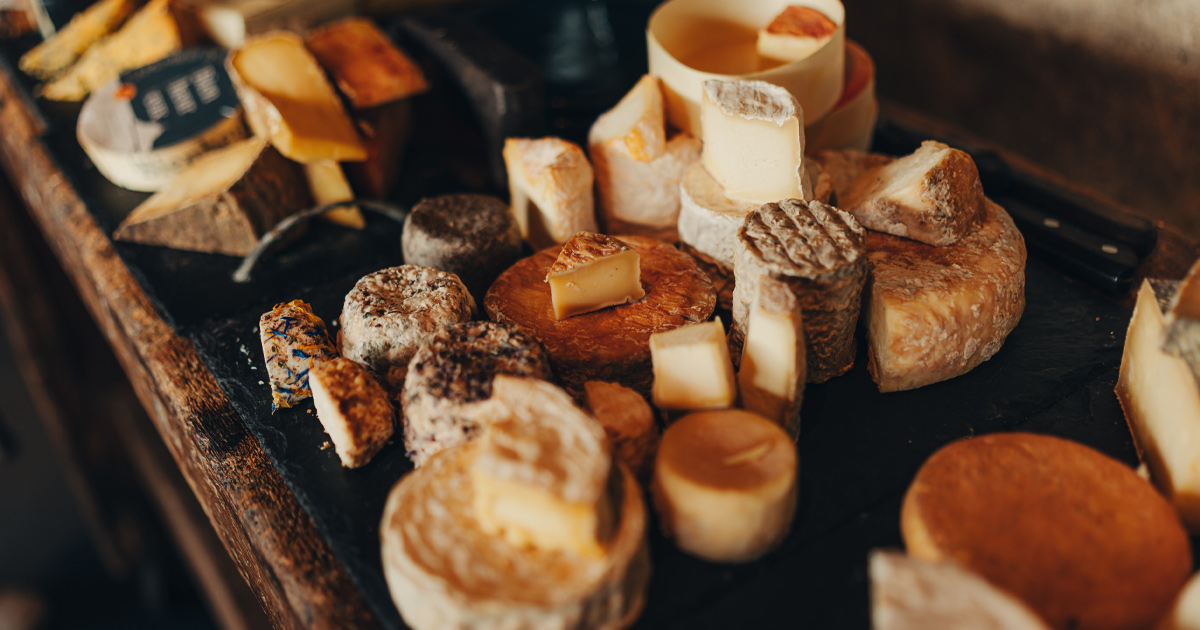
Image: Ultimate Driving Tours
A quick look at the different types of cheese
The beauty of Europe’s diverse cheese landscape lies in its incredible variety; no two European cheeses are the same. With such a wide flavour spectrum, cheeses are best categorised by texture, from soft to hard.
At one end of the spectrum you’ll find fresh cheeses such as Mozzarella, Ricotta, and Chèvre. These mild cheeses are often stored in liquid and best eaten soon after production.
Soft cheeses such as Brie, Camembert, and Goat’s Cheese often have a soft and bloomy rind with a creamy inside. These are best served at room temperature and spread on bread or crackers, or even baked for an indulgent treat.
Moving along the scale, you will find semi-soft and semi-hard cheeses, which are easily sliced although not spreadable. Provolone, Cheddar, Havarti, Edam and Manouri are good examples of European semi-soft and semi-hard cheeses.
A distinctive category that can range from soft to semi-soft is blue cheese. Characterised by veins of blue, green or grey edible mould, blue cheese is pungent, tangy, and often a love-or-hate affair. Look for varieties like Roquefort, Stilton and Gorgonzola.
Finally hard cheeses such as Parmigiano-Reggiano, Grana Padano and Pecorino are mature, nutty and tangy, and simply delicious when grated or shaved over a wide array of dishes.
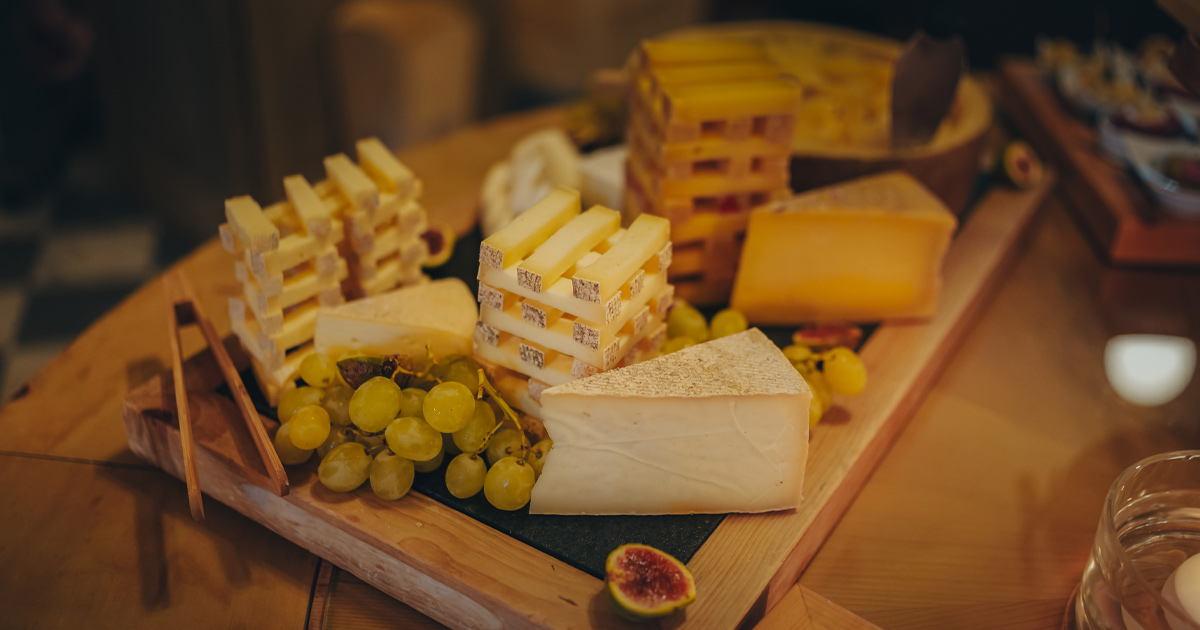
Image: Ultimate Driving Tours
Delicious Italian cheeses and their origins
From a hot slice of quattro formaggi pizza to a sweet stuffed cannoli, cheese is an essential part of Italian cuisine. Italy is also not short of world-famous cheeses, so we begin our guide to cheese with five of our favourite Italian varieties.
Parmigiano-Reggiano
Arguably the most iconic of all Italian cheeses, Parmigiano-Reggiano – often known as Parmesan – is a PDO (Protected Designation of Origin) hard cheese with a distinctive nutty flavour. Hailing from the regions of Parma, Reggio Emilia and Bologna, it’s made from raw cow’s milk and aged for at least 12 months. While it can be enjoyed alone, it’s an exceptional culinary cheese, playing a star role in many recipes and often serving as the perfect finishing touch to pasta dishes.
Mozzarella
The polar opposite of Parmigiano-Reggiano, Mozzarella is a gorgeous soft cheese that’s plump, mild and creamy. Originally from southern Italy, including Naples, Salerno and Caserta, Mozzarella is notably made with buffalo milk, which adds to the creaminess. It’s perfect for a Caprese salad, and just as delectable when cooked – adding its wonderful gooey texture to pizza and pasta.
Pecorino Toscano
While Pecorino Toscano may not be as well-known as the more popular Pecorino Romano, the cheese lover may prefer this mild and tangy Tuscan variety. This PDO-protected cheese tends to be smaller and milder than its Roman cousin, but can be aged for a more robust flavour. It’s perfect when paired with a glass of Chianti on our delightful Tuscan supercar driving tour.
Ricotta
Meaning ‘recooked’ in Italian, Ricotta is a soft cheese made using the whey that’s leftover from the production of other cheeses such as Mozzarella and Provolone. Creamy and crumbly, Ricotta is an ideal ingredient in both sweet and savoury dishes, from cheesecakes and cannoli to calzone, stromboli and ravioli.
Burrata
Originating in the southern Italian region of Puglia, Burrata is an incredibly decadent cheese and a shining star of our cheese guide. Made from cow’s milk, Burrata features an outer shell of solid Mozzarella cheese, which is torn open to reveal a creamy and buttery mix of cheese shreds known as Stracciatella, and clotted cream. This gorgeous cheese makes for a simple yet luxurious lunch when paired with local tomatoes and fresh bread.
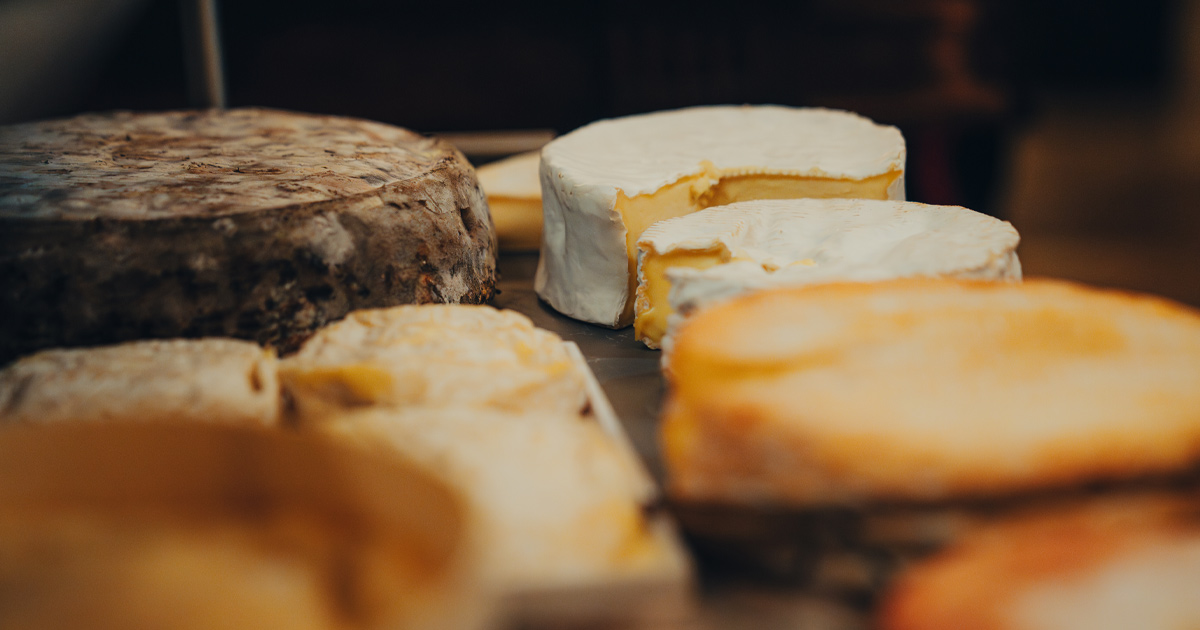
Image: Ultimate Driving Tours
Our favourite French cheeses and how to enjoy them
France is a land famous for champagne and châteaux – which you can experience on our luxurious French tour –, but it’s just as celebrated for its fantastic cheeses. It’s said that the average French person eats around 26 kg of cheese each year – and we aren’t surprised with such quality on offer. Here’s our guide to French cheeses.
Brie
Brie is one of France’s most iconic and beloved cheeses, originating from the northern Île-de-France region. Beneath its bloomy edible rind sits a soft and creamy cheese with a mild flavour and slightly earthy aroma. Brie is divine whether in a baguette, dipped in breadcrumbs and fried, or simply enjoyed by the chunk. For something extra special, cheese lovers should try the protected Brie de Meaux, made with raw milk.
Roquefort
No fancy cheese guide would be complete without a wedge of Roquefort. Hailing from the scenic commune of Roquefort-sur-Soulzon in the south of France, Roquefort is a moist, salty and tangy blue cheese made from sheep’s milk. The distinctive character of this PDO-certified cheese is attributed to its natural fermentation in local caves.
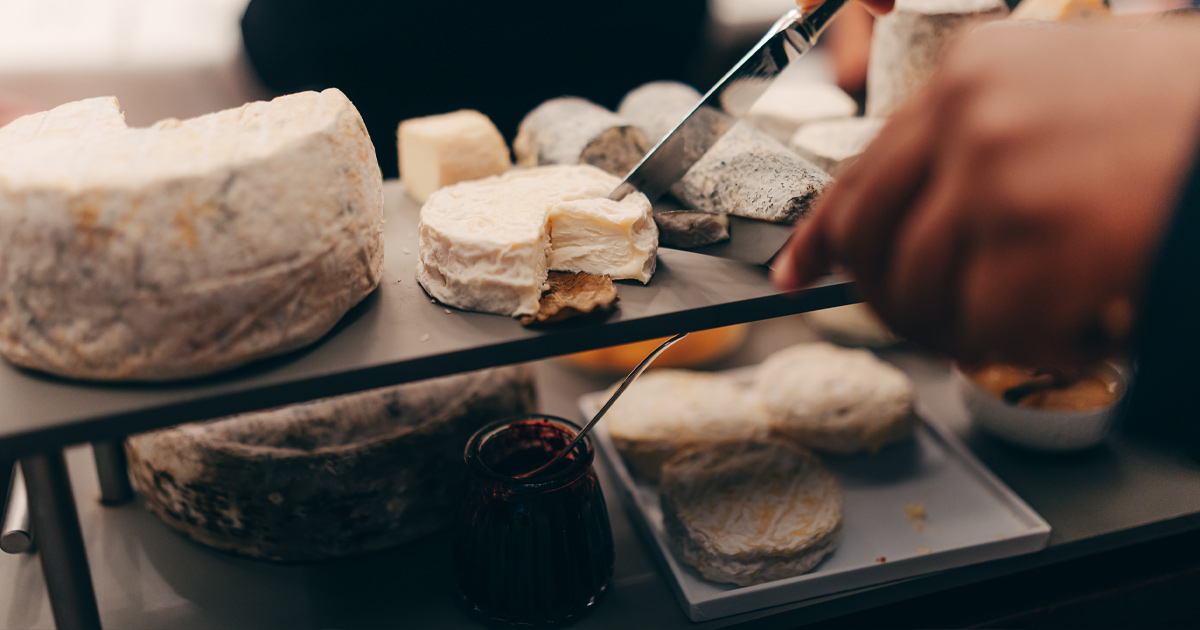
Image: Ultimate Driving Tours
Camembert
From Normandy, Camembert is another legendary French soft cheese, although one that offers a typically deeper and earthier flavour to Brie. We love it spread onto crusty bread, but a more indulgent way to serve Camembert is to bake an entire wheel and use it as a gorgeous cheesy dip. Magnifique!
Banon
One of our favourite French cheeses is a product of the gorgeous southern region of Provence, from the sleepy town of Banon. Wrapped in chestnut leaves, Banon cheese is an unpasteurized circular variety made from goat’s milk. It’s a moist, pungent and earthy cheese courtesy of the mould that grows under the leaves. Simply gorgeous with a little crusty bread and a glass of Provençal rosé.
Comté
From the underrated Jura region of eastern France, Comté is hard cheese made from unpasteurised cow’s milk. It typically offers a slightly sweet and nutty flavour, although its flavour develops with ageing. Comté is a great chef’s cheese with excellent melting properties, making it as good whipped into a tartiflette or baked into bread as it is enjoyed on its own.
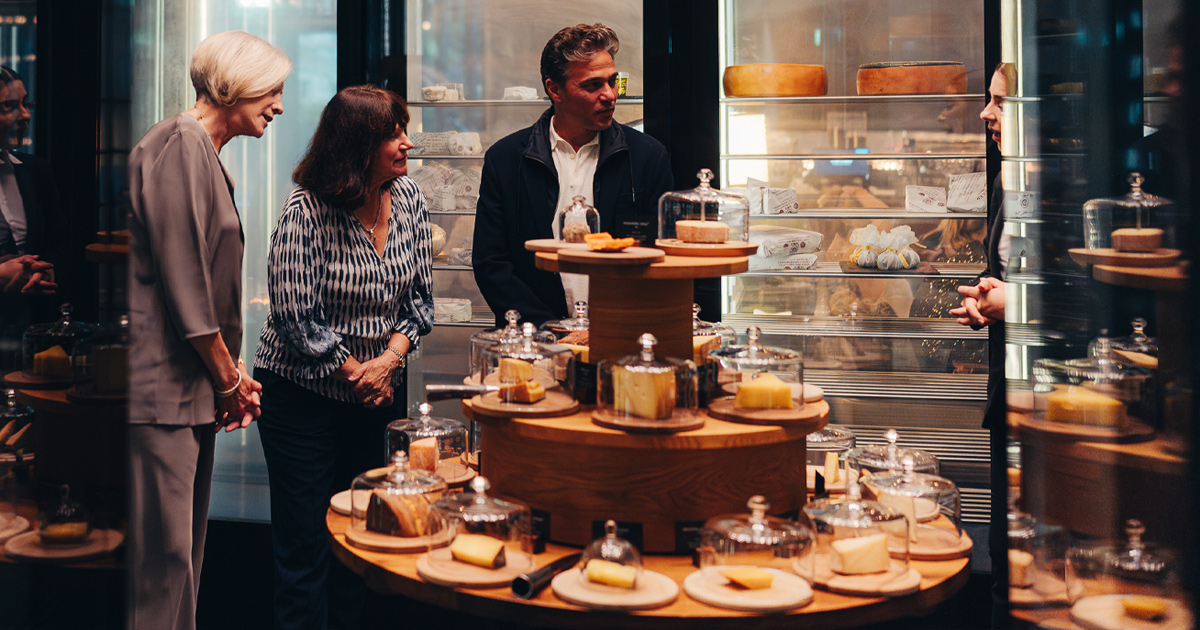
Image: Ultimate Driving Tours
Other amazing European cheeses: Swiss, Spanish & more
Europe may be renowned for its Italian and French offerings, yet there’s a whole continent of cheesy goodness for cheese lovers to enjoy. Here’s our selection of the best of the rest.
Cheddar (England)
A global household name, Cheddar sits proudly among the most popular European cheeses – certainly the most popular in the UK. From the village of Cheddar in Somerset, England, this semi-soft cheese comes in a wide range of flavour profiles, from mild and creamy to mature and sharp. Such versatility makes Cheddar equally at home on a gourmet cheese board as it is in a lunchtime sandwich.
Gruyère (Switzerland)
In the town of Gruyères, cheese is more than just a business – it’s a way of life. For cheese lovers, it’s an essential pilgrimage, with the town’s namesake cheese at the top of the list. Gruyère is a hard cheese made from cow’s milk, celebrated for its rich, nutty flavour that becomes more complex with age. You can experience authentic Gruyère with us at The Chedi on our luxury driving holiday in Switzerland, which includes a visit to a dedicated cheese room with a five-metre-high cheese tower.
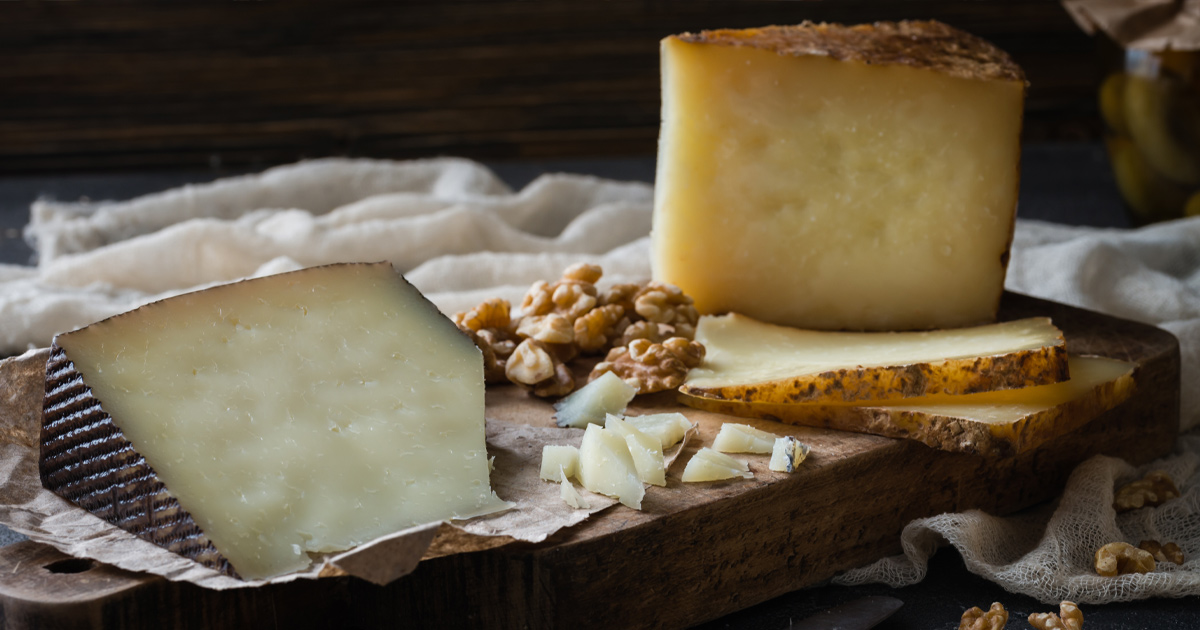
Image: Anastasiia - stock.adobe.com
Manchego (Spain)
Hailing from the Spanish region of La Mancha, Manchego has rightly earned PDO status and is undoubtedly Spain’s most famous cheese. Surrounded by its distinctive zigzag rind, Manchego is firm and springy in texture and balanced in flavour – milder when fresh (fresco) and sharper after 12 months of ageing (viejo). It’s a cheese to savour with local olives and a glass of Rioja.
Halloumi (Greece)
Eating freshly grilled, slightly crispy Halloumi is one of life’s simple pleasures, especially if you can do it under a pristine blue sky. Typically made from a blend of sheep and goat’s milk, this squeaky cheese is a staple of Greek cuisine, but enjoyed around the world for its rubbery mouthfeel and pleasantly salty flavour.
Cabrales (Spain)
We round off our cheese guide with perhaps Europe’s most prestigious cheese: Cabrales, from the Asturias region in northwest Spain. Traditionally made with a blend of local cow, goat and sheep’s milk, this pungent blue cheese is aged in natural limestone caves in the area for a creamy and intense artisan cheese that demands to be savoured. In 2020, Cabrales broke records when a 2 kg block was sold for £18,615!
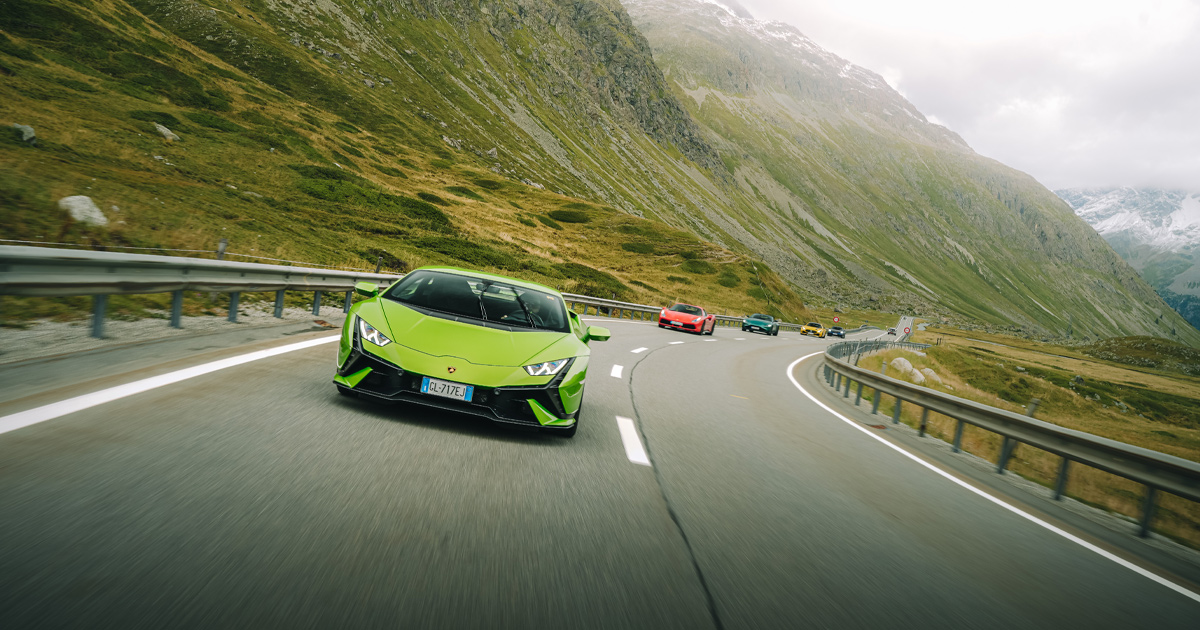
Image: Ultimate Driving Tours
Love food? Why not explore Europe as part of a bucket-list luxury tour?
You can indulge in cheese, wine and award-winning dining by joining us on our bucket-list luxury driving holiday in Italy in 2025. Over an opulent week, you will enjoy four days of supercar driving along Italy’s most gorgeous roads, a VIP weekend at the iconic Italian Grand Prix at Monza, and an epicurean journey through Italy’s beloved cuisine.
If you want to learn more about our Italian adventure or any of our European luxury experiences, speak with our friendly travel concierge team today.
Share Article
